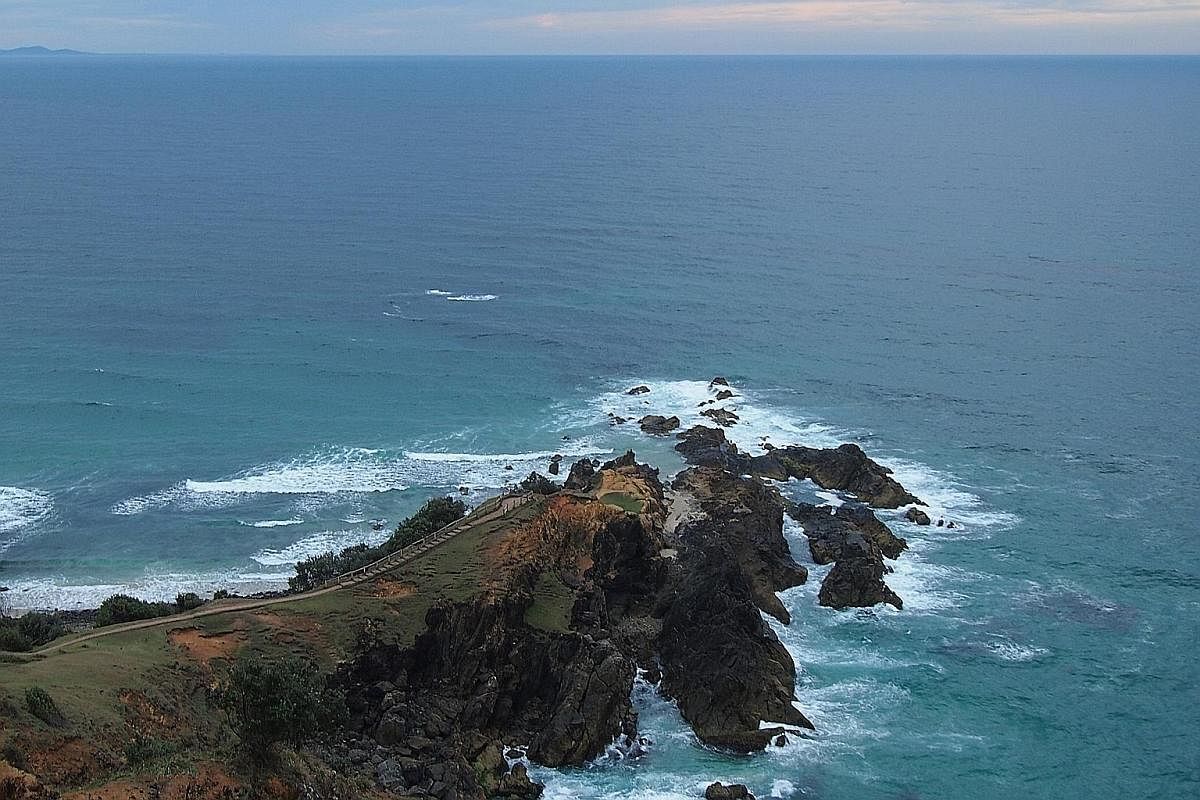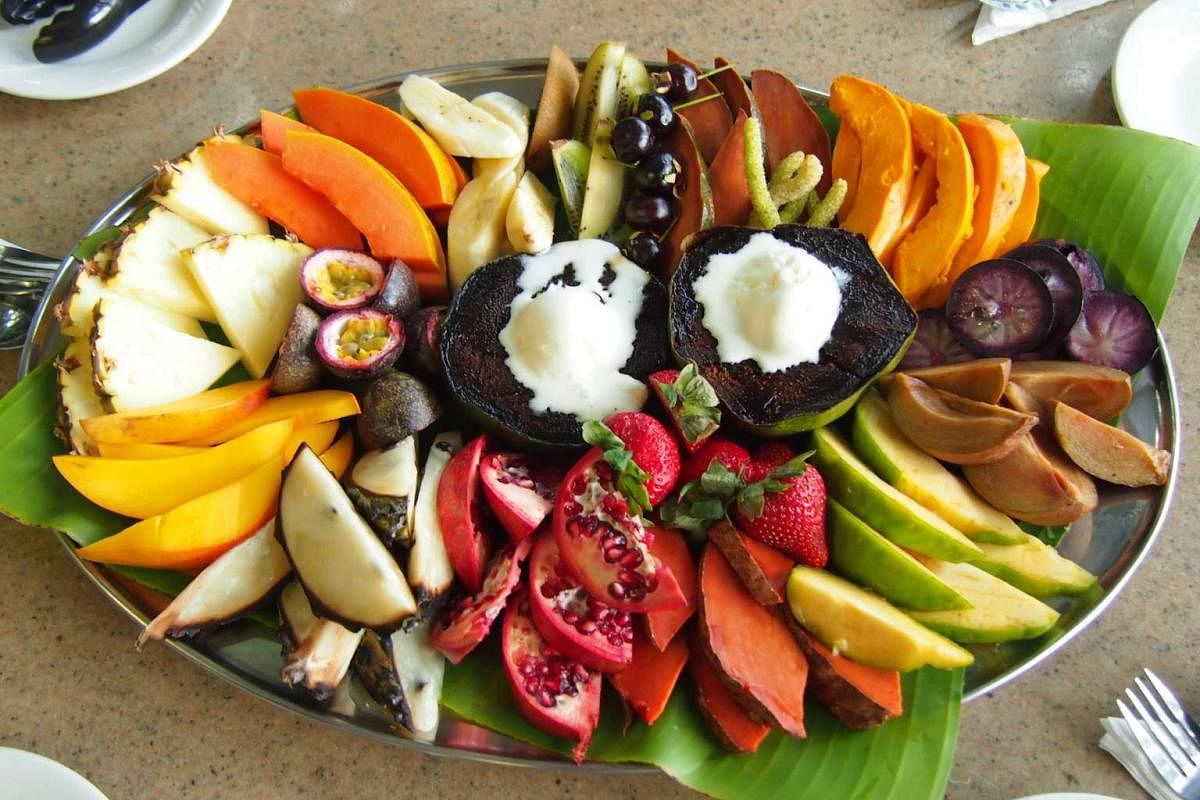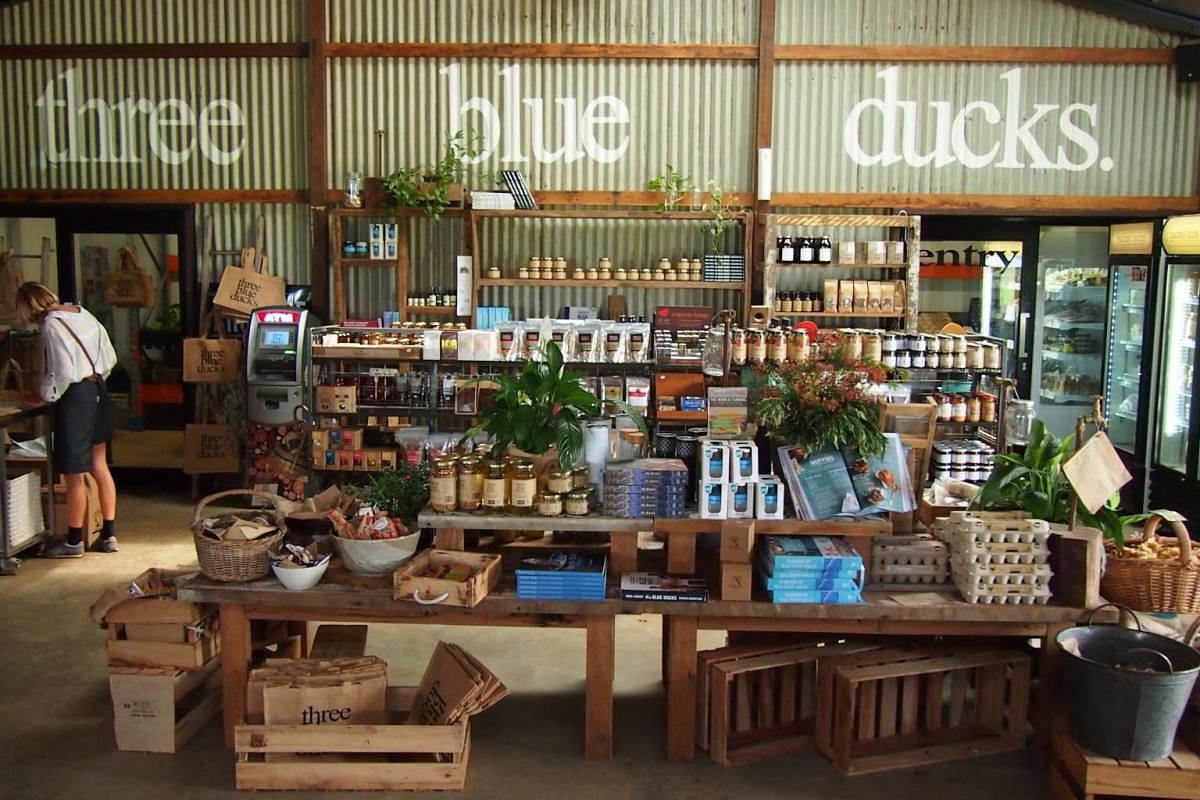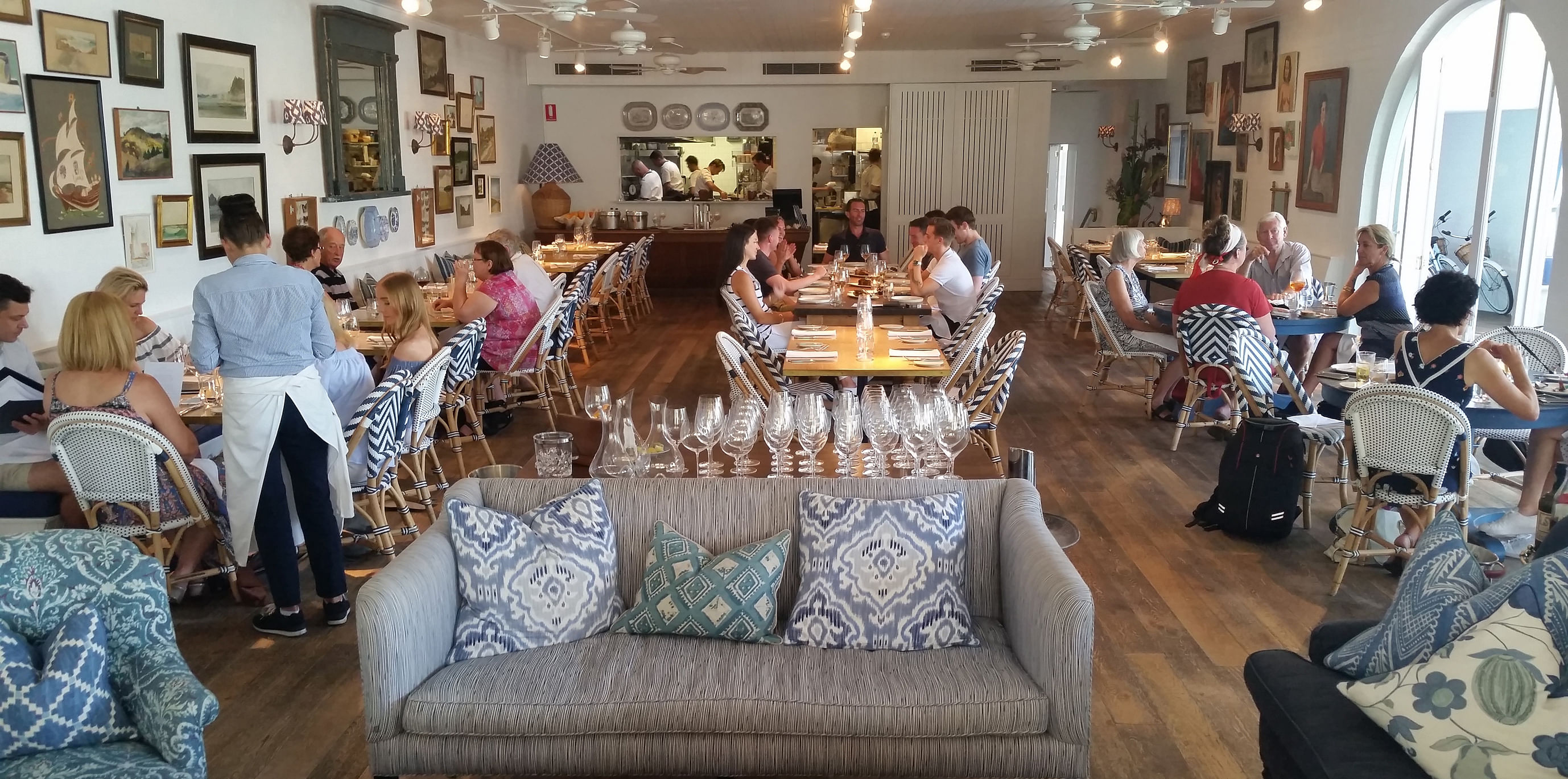-
Getting there
-
Qantas airline (www.qantas.com) offers daily flights from Singapore to Brisbane, from which Byron Bay is a two-hour-drive away by car or by bus (www.brisbane2byron.com). Alternatively, travellers interested in taking the Legendary Pacific Drive route (www.visitnsw.com/things-to-do/drives-and-road-trips/the-legendary-pacific-coast) can fly on Qantas to Sydney (twice daily except Sunday, when it flies once a day).
From there, Bryon Bay is a nine-hour drive best done in stages, with stopovers in scenic locations such as the Hunter Valley and Coffs Harbour.
Tips
Queensland does not use daylight savings time, which means that for part of the year, it is two hours ahead of Singapore, while New South Wales is three hours ahead.
This can get confusing when travelling to the Northern Rivers region from Brisbane. In the Tweed region, particularly in towns closer to the Queensland border, some restaurants and attractions use Queensland time, so do check.
Bay of tranquillity
Byron Bay, a coastal town south of Brisbane, is a place that hums with meditative calm




From the car window, I can see out across the landscape, over steeply rolling hills and sloping forests to the Tasman Sea glimmering faintly in the distance, each turn along the hill crest revealing one spectacular vista after another.
I love serpentine roads such as Coolamon Scenic Drive, one of many pleasant routes winding its way through the Northern Rivers region at the north-eastern tip of New South Wales, Australia.
It is subtle, this part of the country - not bright and alive on the water like Sydney or impressively ancient like Uluru, nor rugged and vast as the Kimberleys, but it is still exceedingly beautiful.
Its undulating emerald hinterland and vast pristine stretches of white sand beaches have long been a siren song for people looking for a slower pace of life.
The area is blessed with a mild climate, ranging from temperate to sub-tropical the closer one gets to the Queensland border.
The earth here is rich and fertile and has been farmed for many years, growing cash crops such as sugarcane and bananas, but also everything from tomatoes to berries to avocados.

Surfers discovered the area, dotted with quaint coastal villages and world-class surf breaks, in the 1960s.
They were followed by an alternative, hippie community in the 1970s and, for the past couple of decades, it has been the holiday retreat of urbanites from Sydney, Melbourne and Brisbane.
Most of the action centres on Byron Bay, a coastal town in the Byron Shire, a two-hour drive south of Brisbane.
During the summer school holidays in December and January, Australians converge here by the thousands.
The restaurants, boutiques and streets are packed and traffic on single-lane roads is often backed up for kilometres.
But people continue to flock here, year after year, building holiday homes up and down the coast.
Despite the influx of trendy urbanites, the region has managed to maintain its earthy, bohemian lifestyle.
Few people seem to be in a rush. Many of the locals know one another by name and stop to exchange pleasantries and news when they bump into one another around town.
It is taken for granted that the fantastic produce, which comes straight to the table from neighbouring farms, is organic and sustainably produced.
Surfers, backpackers and the eco-conscious remain a core presence, so does a strong spiritual community.
Town billboards are covered in notices for reiki healers, yoga retreats and energy workshops.
Crystal Castle and Shambhala Garden (www.crystalcastle.com.au), a private park 20 minutes inland from Byron Bay, offers aura readings, meditation paths and some of the biggest crystals in the world.
The region's mild climate, with sunny days and warm temperatures almost year round, also makes it easy to avoid the busy summer season.
While July is the coldest month, with temperatures dipping into the teens, spring from September to November is ideal, when the weather and water are warmer and there is low chance of rain.
Late summer to autumn is also a good time to visit. In February, when the crowds are gone, visitors can still enjoy the summer weather and temperatures stay in the mid-20s through May.
You want to go when the weather is good because there is so much in the Northern Rivers to see and do, from sea kayaking and stand-up paddleboarding to mountain biking and hiking the magnificent coastal walks.
Go hang-gliding or fly in a microlight aircraft. Learn to surf with one of half a dozen surf schools in Byron, or attend the world-renowned Byron Bay Blues Fest (www.bluesfest.com.au).
When it started in 1990, the festival attracted 6,000 people. Today, more than 100,000 people attend the annual event, held over five days of the long Easter weekend on a tea tree farm a few kilometres north of Byron Bay.
The festival showcases more than 200 performers across seven stages and attracts big names such as Bob Dylan, Paul Simon, Alabama Shakes, John Mayer, Joss Stone and B.B. King.
Or you can eat your way through the region, as I did, hopping from one restaurant to another.
The restaurant at The Byron at Byron Resort & Spa, built amid 20ha of subtropical rainforest (www.thebyronatbyron.com.au), where I had a salad of fresh burrata and bright red, juicy tomatoes, fresh spring risotto and perfectly cooked white fish, was the best meal of my trip and a particular highlight.
But with the freshest of produce and seafood caught right off the coast, it is hard to go wrong with any restaurant one chooses.
An hour's drive north of Bryon Bay takes visitors into the Tweed Shire, where the award-winning Halcyon House (halcyonhouse.com.au) luxury boutique hotel opened on Cabarita Beach in 2015.
Every detail, nook and cranny of the uber-stylish blue and white themed hotel has been designed to an Instagram-worthy T.
And the food at the hotel's restaurant Paper Daisy, led by ex-Noma chef Ben Devlin, highlighting local, coastal flavours, is divine.
My starter of handmade semolina pasta with clams in a garlic cream sauce, topped with lemon myrtle, native pepper and purple flowers, was as tasty as it was pretty.
And the catch of the day, grilled in paper bark with onion, seaweed and beach plants, was smoky, delightfully different and perfectly cooked.
The area's mild climate and fertile volcanic soil mean that the region can grow a wide variety of fruit, vegetables and nuts, including the macadamia nut, which is native to the area.
Coffee has been grown here since the 1800s and travellers can pick up a bag of freshly roasted beans at Zentveld's (shop.zentvelds.com.au), a coffee farm in Newrybar, a 20-minute drive from Byron Bay.
Be sure to buy a bottle of Ink Gin (inkgin.com), a remarkable spirit which is handmade locally with native herbs such as lemon myrtle, Tasmanian pepperberry and liquorice root.
An infusion of butterfly pea flower (the same one used to colour Nonya kueh such as pulut tai tai) gives it a unique indigo hue that changes to shades of lavender when mixed with tonic water, though the gin is light and floral enough to drink on its own.
With so much to eat, experience and explore, it is easy to see why Byron Bay and the Northern Rivers region are among Australia's top holiday spots.
On my last morning in Byron Bay, I take a walk along Tallow Beach, marvelling at the purity and immensity of it.
Digging my toes into the soft white sand, enjoying the sound of the wind and the waves, I try to absorb as much of Byron's calm, honest energy as I can.
There is something intangibly special about the place.
And one thing is clear - life is good here.
Tropical Fruit World
Tropical Fruit World (www.tropicalfruitworld.com.au), a working farm in an area called the Tweed Valley, is one of the region's most popular sites - and for good reason. The Tweed Valley, about a 45-minute drive north of Byron Bay, was formed 20 million years ago by a volcano eruption which left behind rich volcanic soil.
The rich earth coupled with a sub-tropical climate has made Tweed Valley, along with the Daintree Rainforest in Northern Queensland and Kakadu National Park in Northern Territories, one of the most bio- diverse regions in Australia.
The 65ha Tropical Fruit World grows more than 500 types of fruit, including 12 varieties of avocados and 42 types of mangoes. It also grows exotic fruit such as the jabuticaba, a grape-like fruit native to Brazil; the mamey sapote, which tastes like spiced pumpkin pie; and the rollinia deliciosa, a type of custard apple which reminds one of lemon meringue pie.
Fruit grown here is sold at markets in Sydney, Melbourne, Adelaide, Brisbane and Perth, but visitors can buy the fruit straight from the source.
The gift shop is also a great place to pick up souvenirs such as jams and sauces, avocado and lemon myrtle soaps, nuts, honey and locally crafted homeware.
Visitors can explore the farm on a two-hour plantation safari - a fully guided tour by tractor train.
The ticket to the farm, which costs A$45 (S$48) an adult, A$25 a child and A$110 for a family of four (two adults, two children), includes the tour, fruit tasting and access to the farm's facilities such as its mini putt golf course, flying fox ride and barnyard with animals including sheep, donkeys, goats and a Clydesdale horse.
The Farm
Nowhere is the farm-to-table ethos exemplified more than at The Farm (www.thefarmbyronbay.com.au), a 32ha working farm less than 10km from Byron Bay.
The Farm grows fresh flowers and vegetables such as garlic, ginger, broccoli and kale, as well as 4,500 trees, including the indigenous macadamia tree.
In addition to that, it raises about 500 chickens, 31 heritage-breed pigs and dozens of Scottish Highland cattle.
One can taste the vegetables at the on-site restaurant, Three Blue Ducks (www.threeblueducks.com), which uses all produce within three days of being harvested.
The restaurant's first outlet is in the Bronte Beach neighbourhood of Sydney, which also had a farm-to- table philosophy.
Opening the second outlet in early 2015 at the farm seemed a natural fit.
The restaurant uses eggs that come directly from the farm's chicken coop and its chefs go straight to the paddock to pick the animals to be butchered.
As a result, the dishes are as fresh as one can expect, complemented with baked goods from the on-site bakery, Bread Social.
The farm also has a produce store and a florist, where you can buy vegetables and flowers.
The farm is free to enter. Guests can pick up or download a map at the entrance and tour the property to see the fields and animals on their own.
Alternatively, they can join a guided hour-long tour at 10am every day (admission: A$10 an adult, A$5 a child or A$25 for a family of four).
The Farm organises workshops, yoga, live music shows and courses on topics such as ethical farming, bee keeping, organic growing and natural building, to inspire people to reconnect with the land.
A playground and hen house next to the restaurant provides entertainment for children.

Tea tree lakes
The tea tree is famous for its oil, which has antimicrobial property and is used in cosmetics and skincare products.
The oil is extracted from the leaves of the tree, which is native to the region.
The Byron area has plenty of tea trees, which has resulted in a curious phenomenon - tea tree lakes.
These lakes are freshwater lakes that are a deep amber colour because of the tannin from tea trees growing along their banks that seep into the water.
The region is thought to be the only place in the world with these naturally occurring tea tree lakes, which are thought to have healing, antiseptic properties. People have been known to bathe in such lakes to clear skin conditions such as acne and dandruff.
The largest of the tea tree lakes is Lake Ainsworth in Lennox Head, a coastal town about a 15-minute drive south of Byron Bay.
There is a camping park nearby and tourists and locals alike come here to swim, do stand-up paddle-boarding and soak in the water.
The lake is open at all times of the year, though it is sometimes prone to algae blooms.

Tweed Regional Gallery
One would not think of finding a world-class arts institution in a countryside area best known for its dairy, sugarcane and banana production.
Yet one exists in the town of Murwillumbah (pronounced muh-will- um-buh), the biggest town in the Tweed region with a population of 7,000.
At the Tweed Regional Gallery (artgallery.tweed.nsw.gov.au), visitors can view an eclectic, top-notch programme of historical and contemporary exhibitions featuring national and regional artists.
But the real highlight of the gallery is the Margaret Olley Art Centre, which celebrates the life and work of one of Australia's most renowned painters.
Olley, born in the nearby city of Lismore, is revered for her still-life and interior paintings.
She was also a notorious collector of things - statues, dolls, flowers, and trinkets - that accumulated in piles and layers in her living quarters and featured often in her paintings.
When she died in 2011, a section of her home, including her dining room, green kitchen and yellow sitting room, were carefully catalogued and recreated in the gallery.
The recreation of her home contains original architectural elements such as windows and doors and more than 20,000 items from her collection painstakingly arranged as they were found in her home.
Visitors can peer through windows and see the spaces exactly as she left them, each vase and paintbrush meticulously in place.
The Lighthouse
The iconic Cape Byron Bay Light House (www.byronbaylighthouse.com) is a must-see.
Built in 1901, it looks out over the tip of Cape Byron, the most easterly point of the Australian mainland.
Dolphins can be seen playing in the waves here and humpback whales too, during the whales' migratory season between June and November. Then, the lighthouse becomes a prime spot for watching the thousands of whales making their way past the cape to the warmer waters around the South Pacific islands.
It is also the best spot to catch the first glimpse of the sun emerging from the Tasman Sea in the morning, though it rises as early as 5.50am at the height of summer.
As an added incentive to get out of bed, catering company Wild Goat Events (wildgoatevents.co) organises gourmet picnics there on request. Named after the wild goats which used to roam around the lighthouse, the company offers picnic hampers (A$150 for two people), which include a three-course seasonal and organic menu featuring breakfast favourites such as smoked chorizo shakshouka (farm fresh eggs baked in a spicy tomato sauce), scrambled eggs with avocado, black beans on a housemade tortilla and banana nut bread.
For those who want a little extra, Wild Goat Events will style the picnic for you, with full linen and table service, floral arrangements and comfortable seating at the lighthouse deck at A$375 for two people.
After breakfast, guests are presented with a postcard and a stamp so that they can send themselves or a loved one a message from Australia's most easterly postbox.
• This trip was co-sponsored by Qantas and Destination New South Wales.
Join ST's Telegram channel and get the latest breaking news delivered to you.
A version of this article appeared in the print edition of The Sunday Times on March 05, 2017, with the headline Bay of tranquillity. Subscribe


